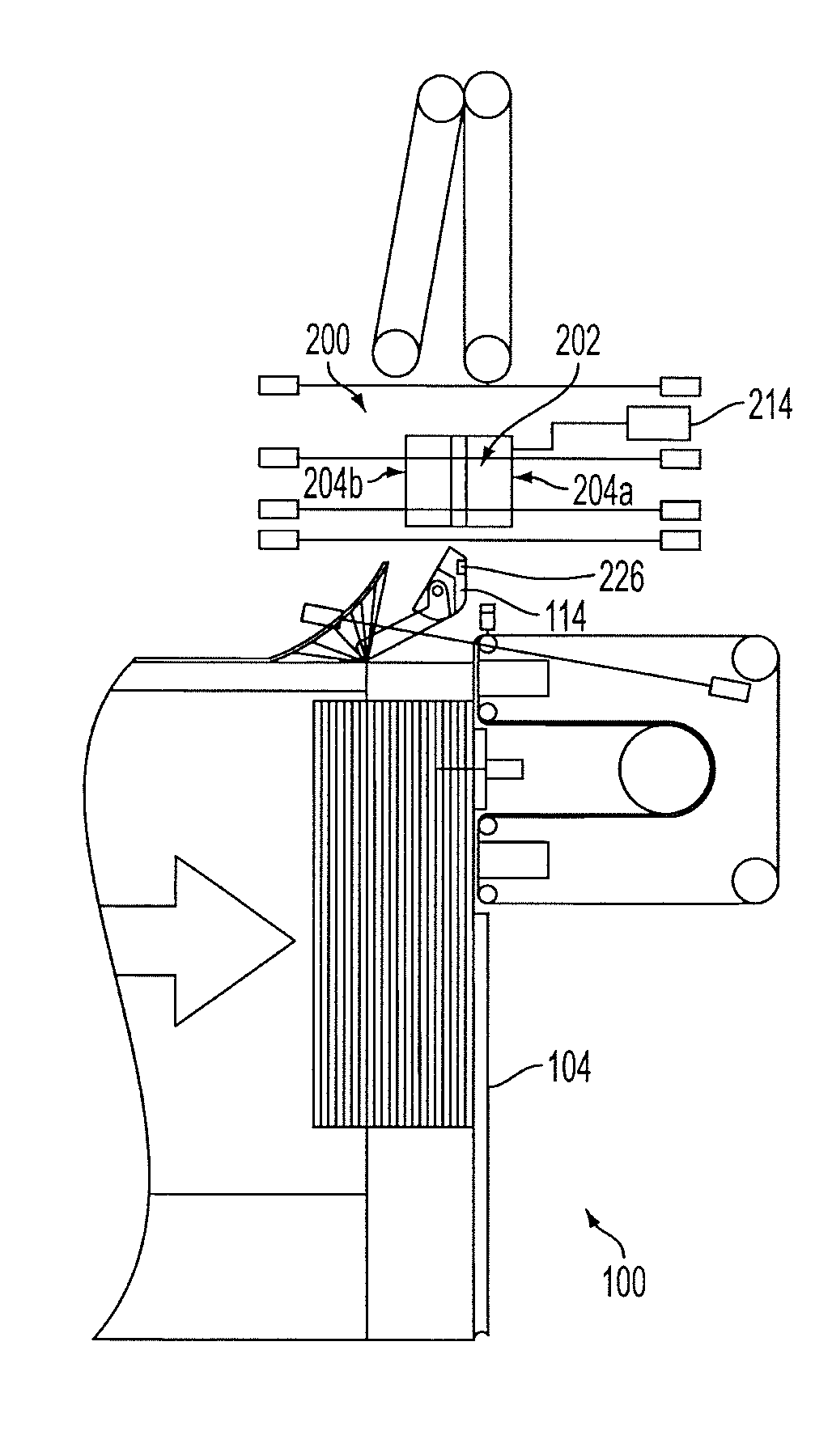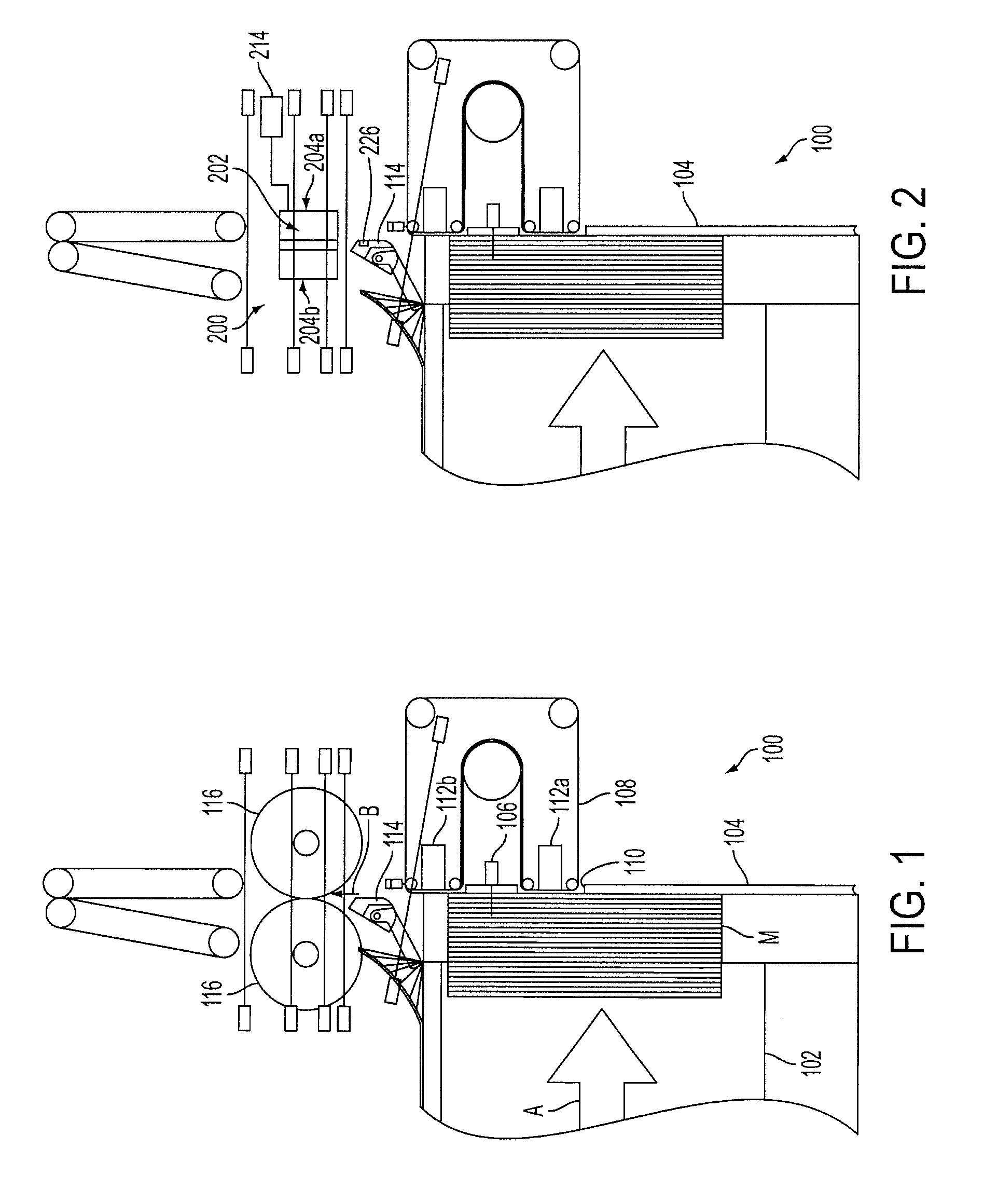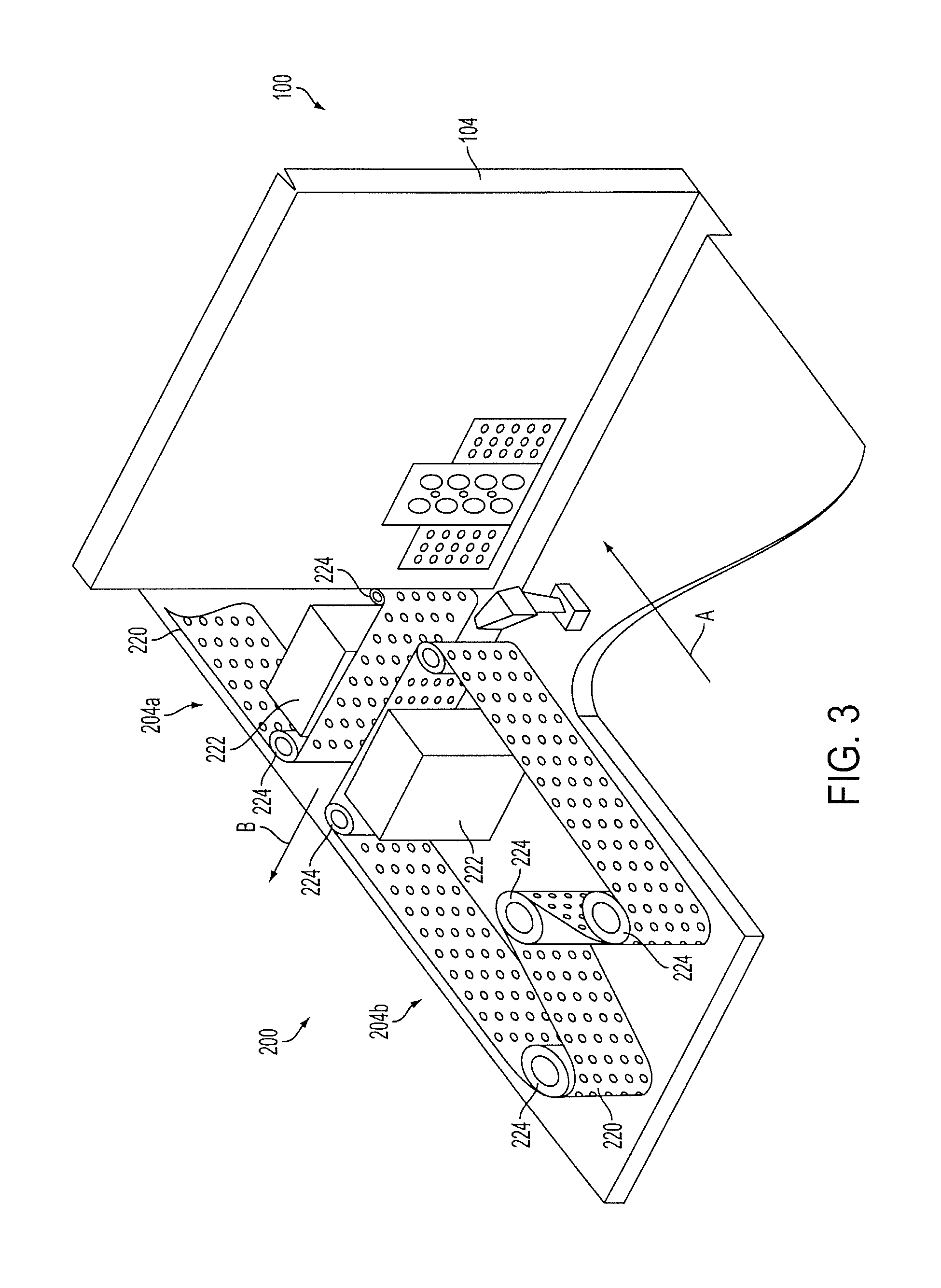Mail doubles detection and correction system
a detection and correction system technology, applied in the field of anti-double detection and correction systems, can solve the problems of unintentional pulling of the second mail piece along with the first mail piece, increased re-sorting costs for customers, and ineffective anti-double mechanisms, so as to reduce the feeder throughput and reduce costs. , the effect of effective detection and correction
- Summary
- Abstract
- Description
- Claims
- Application Information
AI Technical Summary
Benefits of technology
Problems solved by technology
Method used
Image
Examples
Embodiment Construction
[0024]A mail doubles detection and correction system 200 according to an embodiment of the present invention is shown in relation to a mail feeder 100 in FIGS. 2 and 3. In this embodiment, the system 200 replaces the pinch wheels 116 of the otherwise conventional feeder 100. The system 200 includes a mail support 202 positioned downstream of the feeder 100 in alignment with the fixed anti-doubler 114 of the feeder and a pair of perforated vacuum belt assemblies 204a and 204b disposed on opposite sides of the mail support. Referring to the cross-sectional views in FIGS. 4 and 5, it can be seen that the system 200 includes a plurality of sensors 206, 208a &208b, 210a &210b, and 212a &212b, disposed about the channel 202 and the vacuum belt assemblies 204a &204b to detect the presence of one or more mail pieces M within a detection space S defined therebetween. A computerized controller 214 determines in real time whether one or more mail pieces are present in the detection space S bas...
PUM
 Login to View More
Login to View More Abstract
Description
Claims
Application Information
 Login to View More
Login to View More - R&D
- Intellectual Property
- Life Sciences
- Materials
- Tech Scout
- Unparalleled Data Quality
- Higher Quality Content
- 60% Fewer Hallucinations
Browse by: Latest US Patents, China's latest patents, Technical Efficacy Thesaurus, Application Domain, Technology Topic, Popular Technical Reports.
© 2025 PatSnap. All rights reserved.Legal|Privacy policy|Modern Slavery Act Transparency Statement|Sitemap|About US| Contact US: help@patsnap.com



